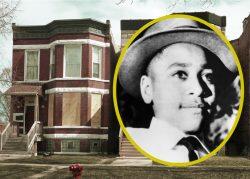 Surge in efforts to landmark Chicago’s historic Black homes
Surge in efforts to landmark Chicago’s historic Black homes
Trending
Single-family lending patterns fuel Chicago’s racial imbalance
Report found severe incongruity across city’s neighborhoods

Home lenders like Chicago as a whole, yet they’ve avoided issuing debt against real estate in certain areas and made dire impacts on racial parity across the city as a result.
Newly released research by the Washington, D.C.-based think tank Urban Institute found predominantly white neighborhoods netted six times more investment per owner-occupied house than predominantly Black areas, the Chicago Sun-Times reported.
The institute based its conclusions on a yearlong study of the various types of capital that flowed into the city from 2010 to 2020. It found single-family investment in neighborhoods with more than 80 percent of residents identifying as Black totaled just more than $5,000 per owner-occupied household over the decade.
For neighborhoods with at least 80 percent of residents identifying as white, single-family investment topped $30,000 for the same time period, by far the greatest draw from lenders out of the demographics analyzed. Meanwhile, neighborhoods consisting of more than 60 percent Latino or Hispanic residents were lended a little more than $6,500 per owner occupied home. Neighborhoods where more than 20% of the population identified as Asian received $15,353.
Chicago ranked 40th in overall investment per household annually among the 100 largest metros in the U.S., meaning it doesn’t experience underinvestment as an entire city.
The study found much healthier per-household investment in the South Loop, West Loop and the North and Northwest areas of the city.
The study found much healthier per-household investment in the South Loop, West Loop and the North and Northwest areas of the city, while it was worse in neighborhoods deeper into the South and West sides.
Financial institutions and the public sector have the ability to correct the inequitable distribution, the report’s researcher Brett Theodos said. Though it’s crucial that the neighborhoods that haven’t been as attractive to neighborhoods with more people of color retain their residents and their current racial makeups, rather than swapping them out for residents of other backgrounds, he said.
Philanthropic, government and nonprofit organizations in addition to private lenders will have to be more tolerant of risk to move neighborhoods that have lagged among lenders and borrowers forward, Theodos said.
Read more
 Surge in efforts to landmark Chicago’s historic Black homes
Surge in efforts to landmark Chicago’s historic Black homes
— Victoria Pruitt




